Life in Ancient Egypt: A Detailed Overview
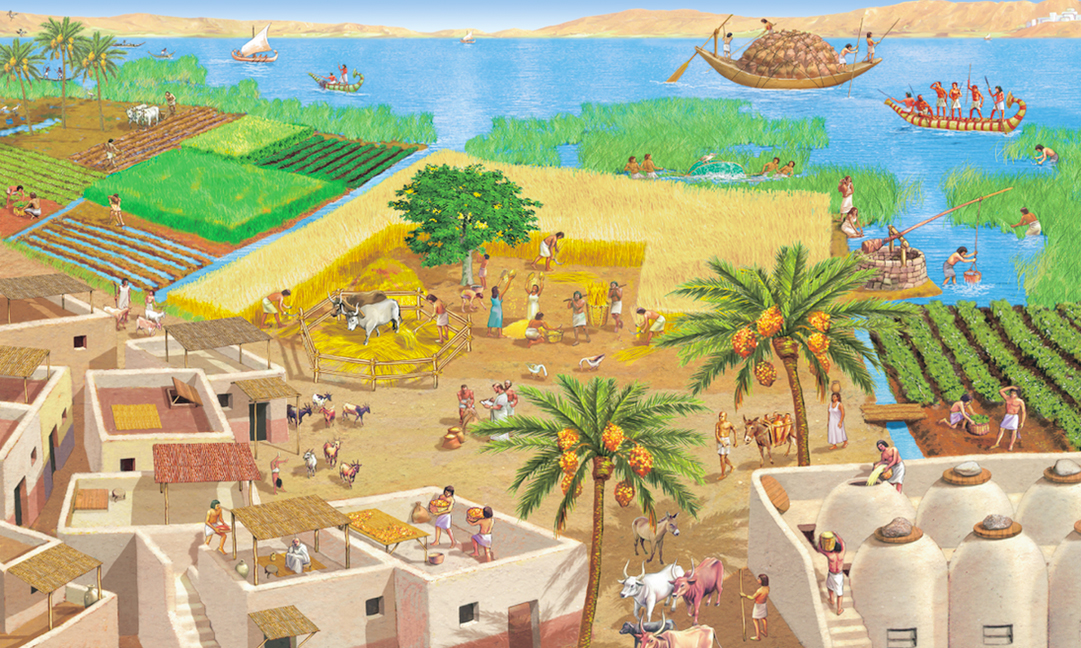
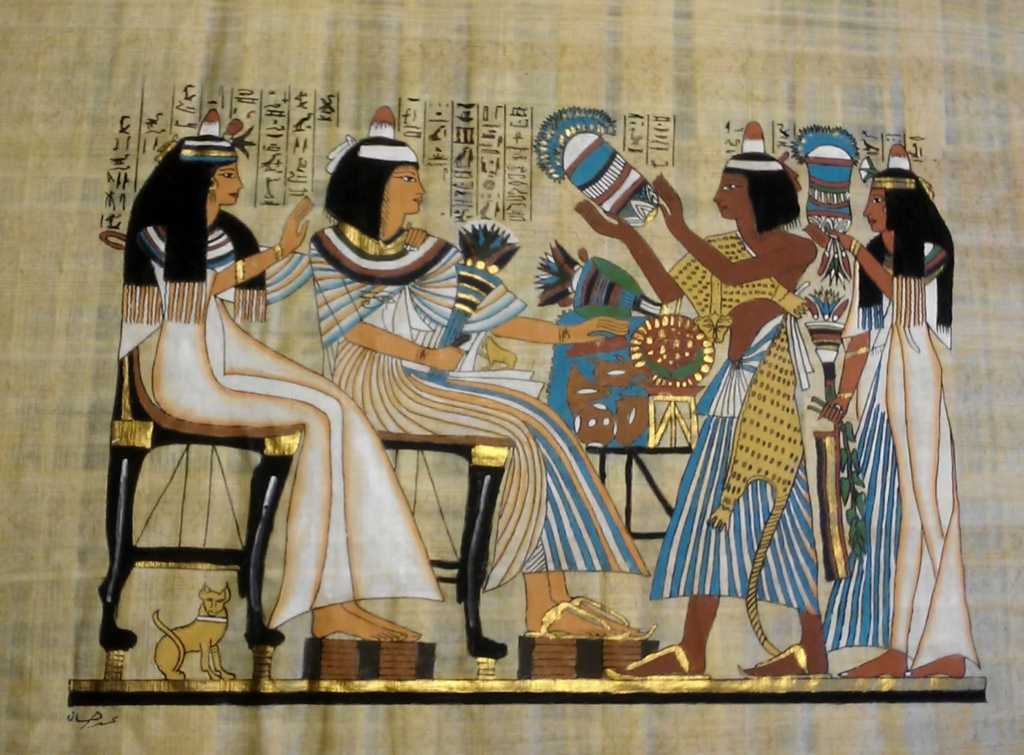
🏺 Daily Life and Society in Ancient Egypt
The daily life of Ancient Egyptians was deeply rooted in routine, community, and a spiritual worldview that tied even the most mundane tasks to the divine. Most people lived in small farming villages along the Nile River, which provided the foundation of their economy, calendar, and belief system. Society was structured in a strict hierarchy, but everyday life was vibrant and active, filled with family duties, work, religious observance, and social rituals.
🌞 Morning to Sunset: The Rhythm of the Nile
Life in Ancient Egypt began at dawn. The rising sun, seen as the god Ra sailing across the sky, was the start of all life and activity. Farmers, who made up the majority of the population, woke early to tend to their fields. They worked in accordance with the flooding and draining of the Nile. When it flooded, men worked on large state projects—building temples, roads, or irrigation canals—while women took care of children and managed the household.
Villagers lived in mudbrick houses that stayed cool during the hot days. Homes were simple: a few rooms, a rooftop sleeping space, and a small altar for the household gods. People wore light linen clothes and took great pride in cleanliness, regularly bathing in the river, shaving their heads, and applying perfume and cosmetics to stay cool and fresh.
🧑🌾 Social Structure: From Pharaoh to Farmer
Egyptian society was highly stratified. At the very top was the Pharaoh, considered a living god, followed by nobles, high priests, and scribes. These elite groups oversaw administration, religion, and governance. Scribes were especially important—they were among the few who could read and write, documenting everything from taxes to religious texts.
Beneath them were artisans, metalworkers, potters, weavers, and builders. These skilled workers lived in modest homes and were respected for their trades. At the base were peasants and farmers, who toiled the land and formed the backbone of Egypt’s economy. Slaves, often prisoners of war, did hard labor, but could still own property or marry.
Despite the hierarchy, most Egyptians shared a sense of unity through religion and royal duty. The idea of Maat—order, truth, and justice—was the moral foundation of society. People were expected to live harmoniously, follow rituals, and contribute to the kingdom’s stability.
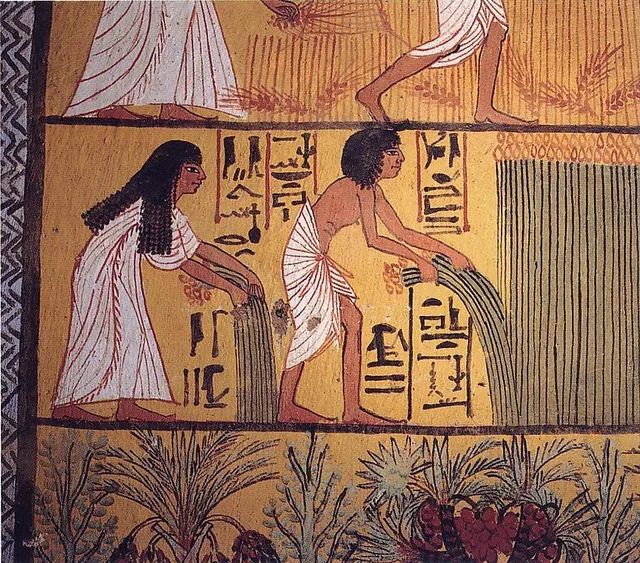
👨👩👧👦 Family and Community Life
Family was central to Egyptian life. Marriages were often practical arrangements but built on mutual respect. Children were cherished and learned skills early. Boys might become scribes, craftsmen, or farmers like their fathers. Girls learned to manage the household and could also own property and inherit wealth. Women had more rights in Egypt than in many other ancient cultures—they could run businesses, testify in court, and divorce.
In the evenings, people relaxed. They shared meals—usually bread, vegetables, and beer—and listened to stories or music. Board games like Senet were common pastimes. Community gatherings, market days, and religious festivals gave rhythm to life beyond labor.
⛵ A Society in Balance
Though life could be harsh—especially for the lower classes—there was a shared belief that the gods watched over all and that life should be lived with joy and purpose. Music, dance, and festivals honored the gods and brought joy to people’s lives. The balance of nature, order in society, and moral conduct was deeply valued.
In this way, Ancient Egypt thrived for over 3,000 years—not just as a political empire but as a deeply interconnected society that found meaning in every layer of life, from the plough to the pyramid.
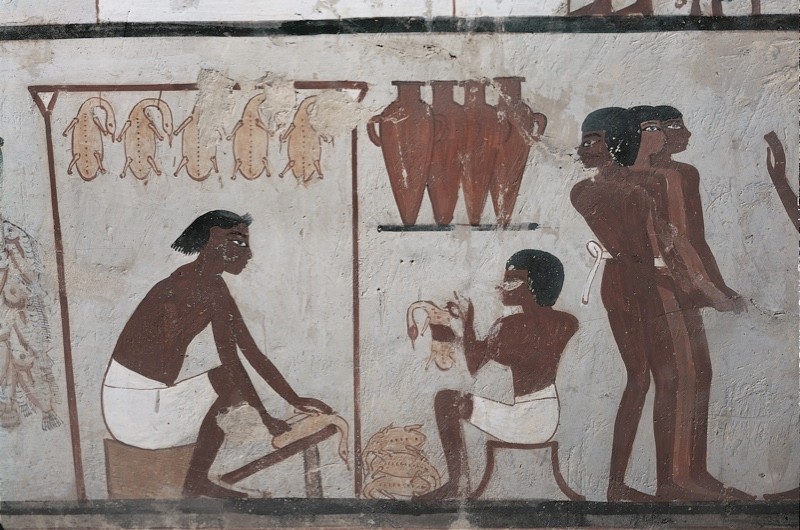
🍞 Food: Nourishment from the Nile
The diet of ancient Egyptians was simple yet sustaining, relying heavily on the bounty of the Nile. The river’s annual floods left behind nutrient-rich soil, allowing farmers to grow wheat, barley, flax, beans, onions, garlic, cucumbers, lettuce, and dates. Bread and beer were the staple foods of nearly every meal, often eaten with vegetables and seasoned with salt or spices. Bread was made from emmer wheat and often included sand or grit from grinding, which over time wore down people’s teeth—a common dental issue among mummies.
Meat was rarer for lower classes and eaten mainly during festivals or special occasions. Common people typically consumed fish, ducks, or geese from the Nile, while the wealthy enjoyed beef, lamb, and even antelope. Eggs and dairy were part of the diet too, especially for those who raised livestock.
Sweeteners like honey and fruits (figs, dates, grapes) added flavor to meals. For drinks, beer made from fermented barley and wine (mostly reserved for the elite) were common beverages. Meals were eaten with fingers, and clay dishes or reed trays were used to serve food. Unlike in modern cultures, there was little distinction between breakfast, lunch, and dinner—people ate when they could, often seated on the ground with family.
👗 Dress: Simplicity and Elegance in Linen
Clothing in Ancient Egypt was suited to the hot climate—light, airy, and made almost entirely from linen, a fabric woven from the flax plant. Linen was ideal because it was breathable and could be produced in different qualities, from coarse weaves for commoners to fine, pleated, transparent linen worn by the elite.
Men typically wore kilts—simple wraps tied around the waist. For laborers and farmers, these were short and practical. Wealthy men might wear longer kilts, robes, or layered tunics with decorative sashes and pleats. Women wore sheath dresses that were tight-fitting and often held in place by straps. These could be simple or adorned with embroidery, beads, or jewelry. Wealthy women often layered garments and wore elaborately pleated linen with sheer capes or robes.
Children often went naked until around puberty, when they began wearing simpler versions of adult clothing. Both men and women shaved their heads or wore wigs, partly to deal with the heat and partly for cleanliness. Wigs were made from human hair or plant fibers and were styled in braids, curls, or elaborate shapes depending on status.
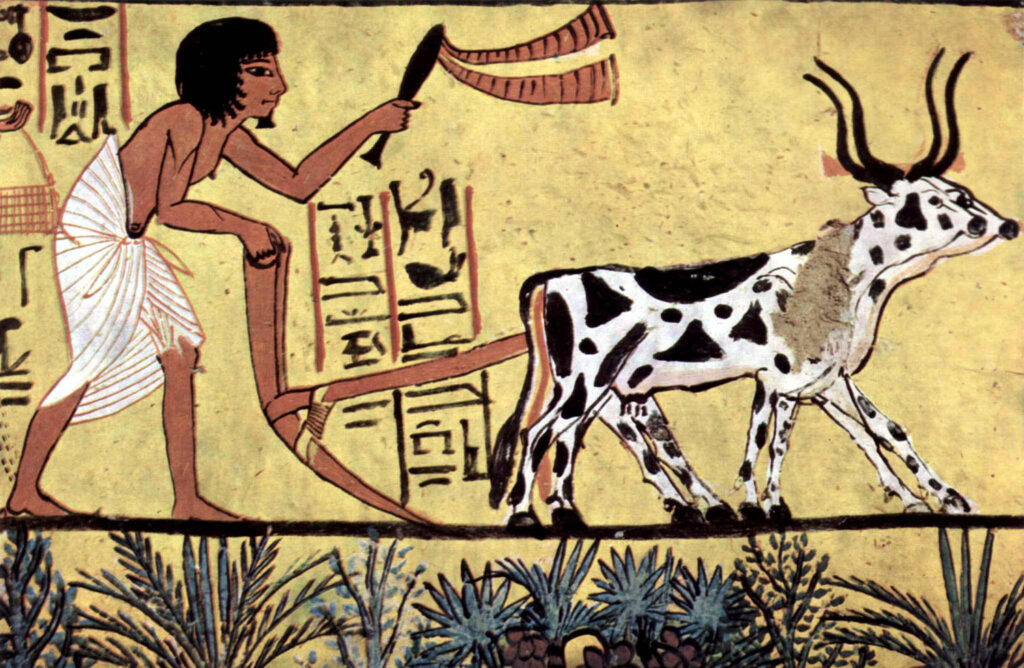
Legacy: A Civilization of Balance
Ancient Egypt thrived on symmetry between work and rest, faith and stress, survival and celebration. Across social classes, people enjoyed art, family life, community, and religious expression. Their homes, clothes, food, and art reflected an enduring pursuit of harmony—Maat—that shaped one of history’s most distinctive and admired civilizations




